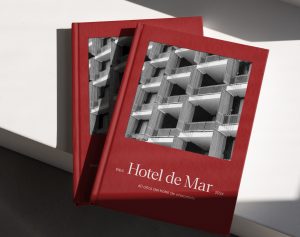Abstract
This thesis approaches the study of seaside hotels as imagined by Jose Antonio Coderch at the beginning of mass tourism in Spain, when small, traditional, family-run hotels scattered along the coastline were transformed into large, tourist hotel chains. These chained-brand hotels popped up exponentially after the implementation of a financial stabilization plan in 1959, remodelling the Mediterranean landscape, and theywere socially rejected, including the only hotel Coderch ever built: Hotel de Mar. The architect said “I always thought this hotel was not worlhy […], it’s my worst work”, showing his dissatisfaction. However, this hotel is one of his best-known works, an essential reference in hotel architecture literature. Hotel de Mar shows his evolution as an architect, from previous unknown projects in Sitges to his most successful work, Torre Valentina. When analyzing his projects, based on rethinking previous works by himself or by other architects, we realize that Coderch repeatedly shows some concerns, which are reflected in his architectural proposals and are sketched in his hotel conception. The existing literature about Torre Valentina and Hotel de Mar deal with these two works separately, as independent projects, whereas this thesis is based on the idea that both works are fruit of the same hotel conception, following Coderch’s ideals but adapted to the owner’s dream hotel (as it is the case of Hotel Buadas, later on renamed Hotel de Mar). Both projects were developed in the same period of time (from 1956 to 1962), on the same landscape (the Catalan coast and the Balearic coast), for the same target clients (first-class hotels) and under the same laws (an incipient, lax tourist and urban legislation). Therefore, Coderch’s proposals respond to the same problems -the only differences between the two projects are the plot of land and the owner’s requirements .Coderch’s iconic step-like buildings featuring setbacks become a malleable calligraphy seen in his subsequent works .His hotel designs rewal a recurring concern to treat guests as individuals and hosts as a collectivity. These concerns are present in his seaside hotels ,which differ from the classic tourist hotels like Hilton lnternational hotels built during the 1950s -consumer goods made in America which colonised the Caribbean, the Mediterranean shores and even the published literature to the point that they became a reference for developers during Spanish developmentalism under Franco’s dictatorship. With the aim of highlighting Coderch’s unique models, his hotel buildings are chronologically analysed and compared with other hotels built by different architects, including Gio Ponti Bernard Rudofsky, Josep Lluis Sert, Alejandro de la Sota, Richard Neutra, Georges Candilis, Luis Gutiérrez Soto and Fernando Higueras. Coderch’s works are compared to hotels with different locations and different construction years, which present a different approach to Coderch’s concerns. Torre Valentina and Hotel de Mar became model buildings for would-be architects who later on built hotels during the “sun and sand” tourism boom. This thesis aims at sketching the concept of seaside hotels as designed by Coderch
Access the thesis




